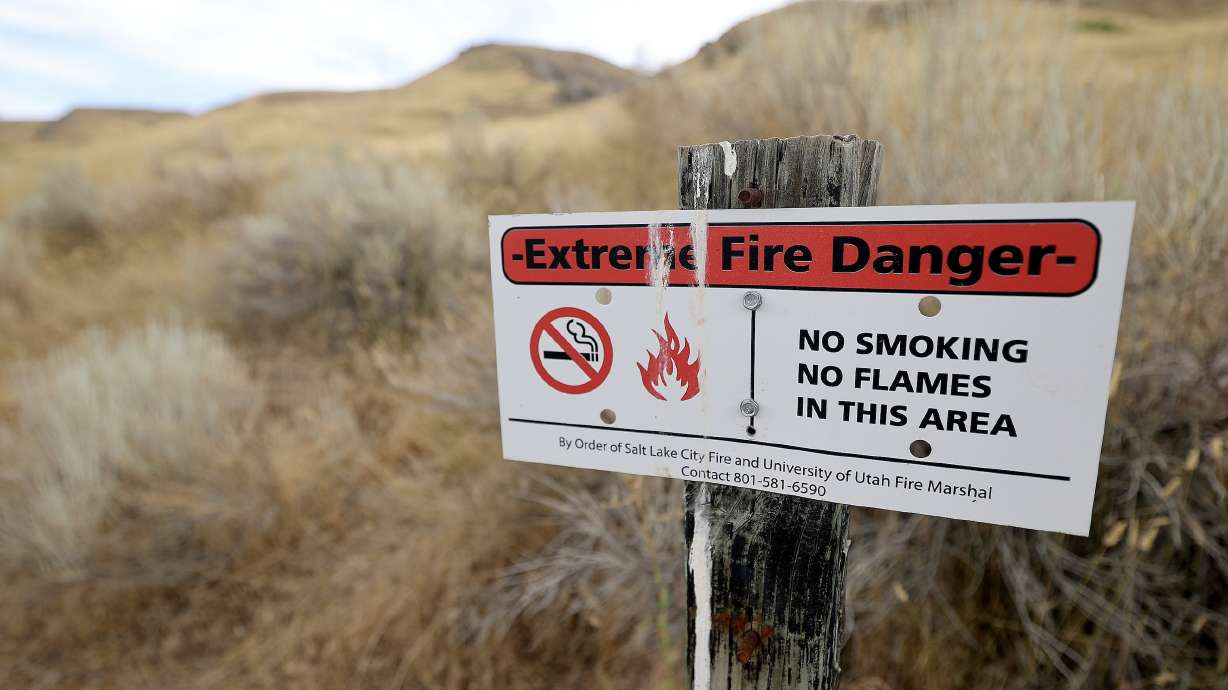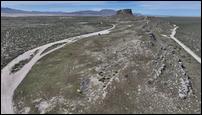Estimated read time: 5-6 minutes
This archived news story is available only for your personal, non-commercial use. Information in the story may be outdated or superseded by additional information. Reading or replaying the story in its archived form does not constitute a republication of the story.
SALT LAKE CITY — Some Utah firefighters have been assigned to help battle large blazes out of the state this summer, but state and federal officials say they are now holding firefighting resources close to home as "critical" fire conditions return.
Leaders and fire directors for the Utah Division of Forestry, Fire and State Lands, as well as local branches of Bureau of Land Management and the U.S. Forest Service, announced Saturday that they agreed to hold resources in Utah for the time being. The decision was also made because hot and dry conditions and the potential for dry lighting are all in this week's forecast on top of the dry conditions.
"Utah has been experiencing hot and dry conditions this summer. These conditions have increased the fire risk in the state, and we feel it is necessary to prioritize our resources to protect communities within Utah," said Brett Ostler, state fire management officer for the Utah Division of Forestry, Fire and State Lands, in a statement.
Increased fire risk
This week has already continued with the theme of a hotter and drier summer than usual. The National Weather Service issued a series of excessive heat warnings and heat advisories that blanket most of the state, where triple-digit temperatures are forecast for nearly all valley areas Monday and Tuesday. High temperatures are expected to exceed 110 degrees Fahrenheit closer to St. George.
Monsoonal storm patterns also remain in the state, which could produce some rain but also generate lightning on both Monday and Tuesday. Although temperatures are forecast to slide down closer to normal summer heat as the week continues, the chance for lightning may persist.

State firefighters say that tacks onto new possible threats to a fuel and fire behavior advisory that remains in place through Thursday. The advisory, issued by the Great Basin Coordination Center, states that a few fire concerns emerged in Utah:
- "Above-normal fine fuel loading and continuity" has developed in northwest Utah.
- "Critical" live fuel moisture values within grass and brush-type fuels. This means it's easier for them to ignite.
- Both live and dead fuel moisture above the 90th-95th percentile across the state.
- 100- and 1,000-hour time lag fuels — a vegetation statistic based on how long it would take for trees, brush and grass to respond to new moisture — are "at historical lows and seeing complete consumption."
"Because we've had a very weak monsoon, moisture we would have seen in July just did not materialize — or at least was not as consistent or as heavy as we'd normally see," said Gina Palma, a meteorologist for the Great Basin Coordination Center, in a video updating the region's conditions last week.
Another possible concern
The decision to hold firefighting resources in Utah on Saturday came a day after Natural Resources Conservation Service officials warned, in their August climate and water update, that Utah soil moisture had fallen to 39% saturation, putting them in the bottom 10th percentile of all observations on July 31 since 2006.
Jordan Clayton, a hydrologist for the Natural Resources Conservation Service, wrote that record-dry conditions were reported in the St. George area and in other places like western Utah and the Uinta Basin. He explained that precipitation in Utah's valleys was "poor" while mountain precipitation suffered its "second-consecutive disappointing month."
This plays into the increased wildfire danger but also has possible ramifications tied to the state's water supply.
Related:
Utah's reservoir system is fine for now. It remains at almost 84% capacity, about 20 percentage points above the median average for August. However, experts point out spring snowpack runoff efficiency is impacted by fall soil moisture levels. In short, efficiency drops as soil moisture levels drop.
"We are really hoping to avoid a repeat of the 2020 summer, where an above-normal preceding snowpack season was followed by extremely hot and dry conditions resulting in historically dry soil moisture levels going into the subsequent winter (which, in turn, contributed to exceptionally poor runoff conditions the following spring)," Clayton wrote in the report.
Nearly 60% of Utah is now considered "abnormally dry," including about 5% of the state — mostly in Tooele County — that is listed as in moderate drought, according to the U.S. Drought Monitor.
Long-term outlook
The National Weather Service Climate Prediction Center's long-range outlooks offer good and bad news. The center now lists most of Utah as having "equal chances" when it comes to precipitation this month, meaning there's now about a two-thirds probability that communities receive at least near-normal rain this month.
But it also lists most of Utah as having 40% or more probability of below-normal precipitation over the next few months, signaling a growing potential that the more productive fall storms may not be as strong this year. It's something water managers will monitor closely before the next winter.
Firefighters are also monitoring long-range outlooks when it comes to future fire potential. Above-normal fire potential remains in place for northwest Utah both in August and September, according to the Great Basin Coordination Center's latest fire potential outlook. Fire risks have dropped back down to normal in southwest Utah with "deeper moisture" from monsoons possible.
"Again, (we're) concerned with the lack of moisture, dry conditions (and) the above-normal grass growth," Palma said.











